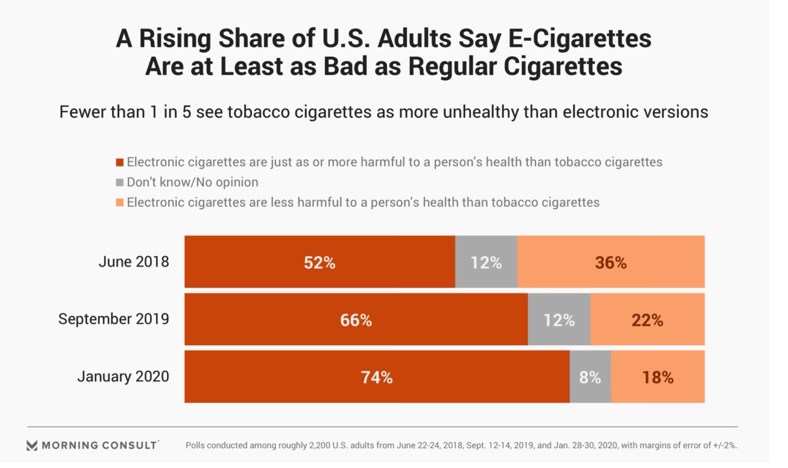Consumers are misinformed about the risk of vaping and that is harmful to public health
Since e-cigarettes and vaping products were introduced to the tobacco industry, smoking rates have gone down precipitously. It is true, smoking rates were going down even before e-cigarettes, but a lot of evidence has credited e-cigarettes with the increased reduction in smoking, both among the youth and adults.
In 2020, however, fewer have sought to quit smoking. Instead, cigarette sales increased. This can be attributed in some way to the stresses of the COVID-19 pandemic. It is possible isolation, anxiety and stress during the pandemic kept people hooked on cigarettes.
A closer look, however, reveals that there was more at play. In the eyes of the public, a negative perception of vaping has been growing. And this is incentivizing fewer people to take up e-cigarettes or other vaping products, which research shows are significantly less harmful than traditional cigarettes and help people quit smoking.
As our report previously explained:
Generally, regular use of e-cigarettes among youths is rare but usually coincides with reduced cigarette smoking. A 2017 CDC study found that an increase in the use of e-cigarettes and hookahs was associated with a decline in cigarette use among U.S. middle school and high school students.
Such a relationship has also been found in adults who take up e-cigarettes as a substitute for traditional cigarettes or as a way to quit smoking. Tobacco products, e-cigarettes included, are all what we economically call substitutes –– they all do one thing which is deliver nicotine to consumers and can hence be substituted in place of the other.
Compared to combustible cigarettes, e-cigarettes do not require burning, which is what produces toxins associated with cardiovascular and other respiratory diseases associated with smoking. E-cigarettes are therefore are a much safer option for delivering nicotine and can help reduce smoking-related deaths and diseases.
But public messaging has not made that clear. In 2019, the CDC put out a recommendation discouraging vaping, even after a study found out that lung illnesses associated with e-cigarettes were largely due to THC-laced products flooding the market. With other numerous campaigns run against vaping through prohibition, tax hikes or anti-vaping ads, it is not surprising that people are heavily misinformed about the risk associated with vaping, especially relative to the risk of smoking
In Minnesota, for example, “in 2020, only 18.2 percent of Minnesota youths said they considered e-cigarettes to be less harmful than regular cigarettes, down from 35.2 percent of respondents in 2017”. Nationally, 65 percent of adults considered e-cigarettes to be very harmful, up from 58 percent in 2019. Similarly, the number of adults that consider e-cigarettes to be as equally or more harmful compared to cigarettes has been on the rise.

For policymakers really concerned about public health, this should be a harmful trend warranting reversal. If consumers perceive e-cigarettes to be more harmful than traditional cigarettes, they are less likely to make the switch to e-cigarettes. Likewise, policies intended to restrict vaping either through prohibition or tax hikes make discourage people from switching to e-cigarettes. In fact, these policies have fostered an increased use of cigarettes.
State bans on e-cigarettes, in particular, have been found to increase conventional cigarette use among 12 to 17-year-olds, effectively slowing the rate of decline in cigarette smoking among teenagers.
Policymakers should reconsider sending the wrong message regarding the risk of vaping. Fostering the perception that vaping is equally as harmful or even more harmful than traditional cigarettes is counterproductive if the goal is to protect public health.